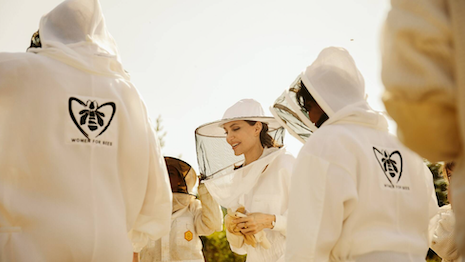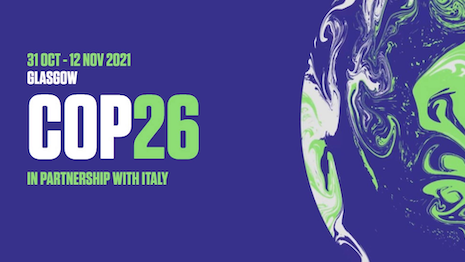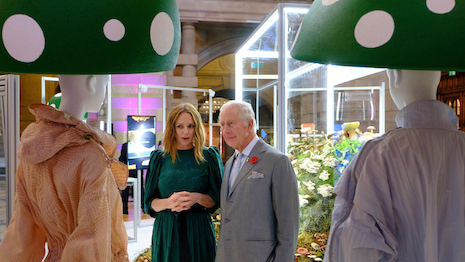 Luxury brands’ environmental and social missions must be underpinned by facts. Image credit: LVMH
Luxury brands’ environmental and social missions must be underpinned by facts. Image credit: LVMH The COP26 international climate summit put sustainability in the private sector under the microscope, and experts say the most difficult part for lagging luxury brands may be starting their environmental journey.
During a Positive Luxury webinar on Nov. 18, a partner from Bain & Company discussed the breakthroughs of COP26. With the dangers of climate change increasingly apparent, businesses – including luxury companies – will have to work alongside the international community to make meaningful change.
“Businesses very much are being sensitive to the fact that [adapting to a low carbon economy] isn’t just something within their four walls,” said Jenny Davis-Peccoud, cofounder and head of the global sustainability and responsibility practice at Bain & Company, Amsterdam.
“Businesses will certainly need to spend a lot more time thinking carefully about where their supply chains are reaching,” she said. “And how do they ensure that what they’re buying to go into these products that we all use every day is not actually causing the damage that we need to end in order to deliver on the climate commitments?”
The webinar was hosted by Diana Verde Nieto, founder/CEO at Positive Luxury, London.
Reaffirming commitments
Held in Glasgow in early November, COP26 ended with hundreds of nations committing to more ambitious climate goals, including a multinational agreement to end and reverse deforestation by 2030 (see story).
However, Ms. Davis-Peccoud and Ms. Verde Nieto agreed that the difficult part is for governments and businesses to deliver on their commitments.
 Governments and businesses discussed climate change at COP26
Governments and businesses discussed climate change at COP26
“We see luxury with a great appetite to actually be much more mindful in terms of material choices, in terms of regenerative agriculture, a lot more focused on innovation,” Ms. Verde Nieto said.
To help meet deforestation goals, fashion brands will have to do a thorough examination of their extended supply chain, including outside suppliers.
Ms. Davis-Peccoud encourages brands to ensure nothing in their supply chains is further contributing to deforestation in areas such as the Amazon or Indonesia.
“I think the first thing is to really get to grips with your supply chain, and it can feel overwhelming, because it’s hard to unpick,” Ms. Davis-Peccoud said. “But that’s really where you are going to have the biggest ability to impact.”
This includes confirming that confirming that suppliers are not causing further environmental damage as they source materials or ingredients such as leather, cashmere, metals and palm oil. Supporting and investing in communities where raw materials originate also cannot be overlooked.
One of the more straightforward ways to approach supply chain changes, according to Ms. Davis-Peccoud, is starting with packaging: from the materials to the amount of packaging.
Ms. Davis-Peccoud also noted that there has a been a pivot in corporate sustainability commitments, as more organizations are recognizing that beyond doing good for the world, these efforts ultimately help their bottom line (see story).
“Sustainability becomes part of how we do business, instead of something that the CEO has announced in Glasgow and the sustainability team is off working on somewhere else,” Ms. Davis-Peccoud said. “It needs to become about how we win in the in the market, and in our day-to-day activities.”
 Designer Stella McCartney and Prince Charles at COP26 in November 2021. Image credit: Stella McCartney
Designer Stella McCartney and Prince Charles at COP26 in November 2021. Image credit: Stella McCartney
Within organizations, sustainability should involve everyone from executives to middle managers to more values-oriented junior employees. Sustainability should also be incorporated into brand messaging: is sustainability encouraged or is consumption encouraged, or is a brand on the sidelines completely?
“Depending on your brand, you can have a very big influence on how people think and act in this in this space,” Ms. Davis-Peccoud said.
Luxury progress
In light of COP26, key luxury players highlighted their recent sustainability efforts.
French luxury conglomerate LVMH Moët Hennessy Louis Vuitton sent several representatives, including designers and executives, to COP26.
On Nov. 3, British fashion designer Stella McCartney, who is a sustainability advisor to LVMH CEO Bernard Arnault, participated at the Sustainable Markets Initiative and met with Prince Charles. She advocated for an outright fur ban, even introducing a petition, and showcased materials that she believes operate as ethical animal alternatives (see story).
On Nov. 6, LVMH hosted “Preserving Biodiversity Can Help Mitigate Climate Change.” Participants include Philippe Schaus, CEO of Moët Hennessy; Alexandre Capelli, environmental deputy director at LVMH; and Carole Collet, director of Maison/0, the Central Saint Martins/LVMH creative platform (see story).
Ultimately, however, luxury has to walk the walk when it comes to environmental initiatives that combat climate change.
“When [sustainability is] something that has no follow through according to the products, and also is not underpinned by facts, then becomes greenwashing,” said Positive Luxury’s Ms. Verde Nieto. “So it’s absolutely massively important that it is actually truly part of the brand DNA.”